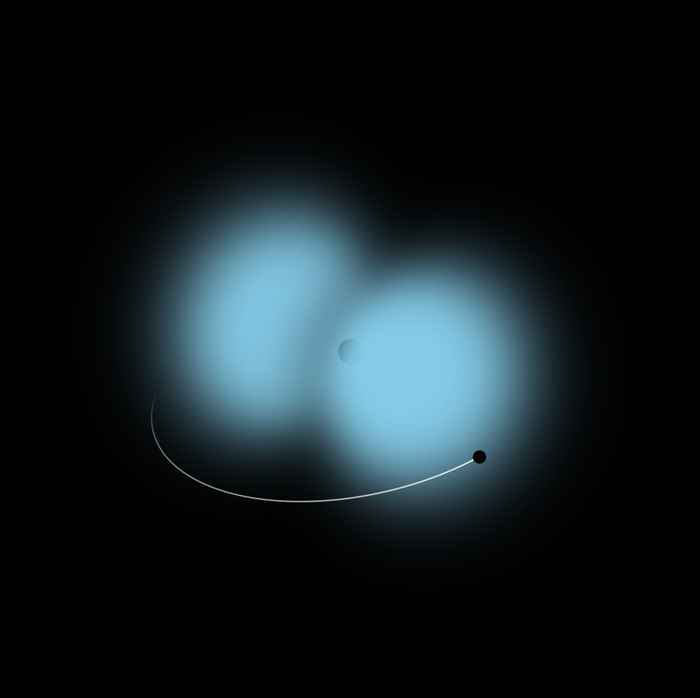Black hole pairs may unveil new particles
17 September 2024

Gravitational waves that are emitted by the merger of two black holes carry detailed information about the shape and evolution of the orbits of the components. A new study by physicists Giovanni Maria Tomaselli and Gianfranco Bertone from the University of Amsterdam (UvA), together with former UvA master student Thomas Spieksma, now at the Niels Bohr Institute in Copenhagen, suggests that a careful analysis of this information may reveal the existence of new particles in nature.
Superradiance
The mechanism that makes the detection of new particles possible is called black hole superradiance. When a black hole spins fast enough, it can shed some of its mass into a ‘cloud’ of particles around it. The black hole-cloud system is referred to as a ‘gravitational atom’, due to its similarity with the electron cloud around a proton. Since superradiance is only efficient if the particles are much lighter than the ones measured in experiments so far, this process provides the unique opportunity to probe the existence of new particles known as ultralight bosons, whose existence may resolve several puzzles in astrophysics, cosmology and particle physics.
The orbital evolution of binary black holes in the presence of ultralight boson clouds has been studied by UvA scientists in a series of influential papers over the past six years. One important new phenomenon that was discovered was that of resonant transitions, where the cloud ‘jumps’ from one state to another, similar to how an electron in an ordinary atom can jump between orbits. Another new phenomenon, again similar to the behaviour of ordinary atoms, is ionization, where part of the cloud is ejected. Both of these effects leave characteristic imprints on the emitted gravitational waves, but the details of such imprints depend on the – so far unknown – state of the particle cloud. In an effort to fill in these remaining details, the new study combines all the previous results, and follows the history of the system from the formation of the binary black hole to the black hole merger.
Two possibilities
The main conclusions substantially improve our understanding of the binary gravitational atoms. The researchers found that there were two possible outcomes of the evolution of such a system, both equally interesting. If the black holes and the cloud initially rotate in opposite directions, then the cloud survives in the state originally produced by superradiance, and it becomes detectable through its ionization, which leaves a clear signature on the gravitational waves. In all other cases, resonant transitions destroy the cloud altogether, and the binary's orbit acquires very specific values of eccentricity and inclination, which can be measured from the gravitational waves signal.
Thus, the new result provides a novel and solid search strategy for new particles, either via the detection of ionization effects in gravitational waveforms in one case, or in the other case via the observation of an anomalous excess of systems with the predicted values of eccentricity and inclination. For both cases, upcoming detailed gravitational wave observations will reveal very interesting information about the question whether new ultralight particles exist.
Publication
The legacy of boson clouds on black hole binaries, Giovanni Maria Tomaselli, Thomas F.M. Spieksma and Gianfranco Bertone. Physical Review Letters 133 (2024) 121402.